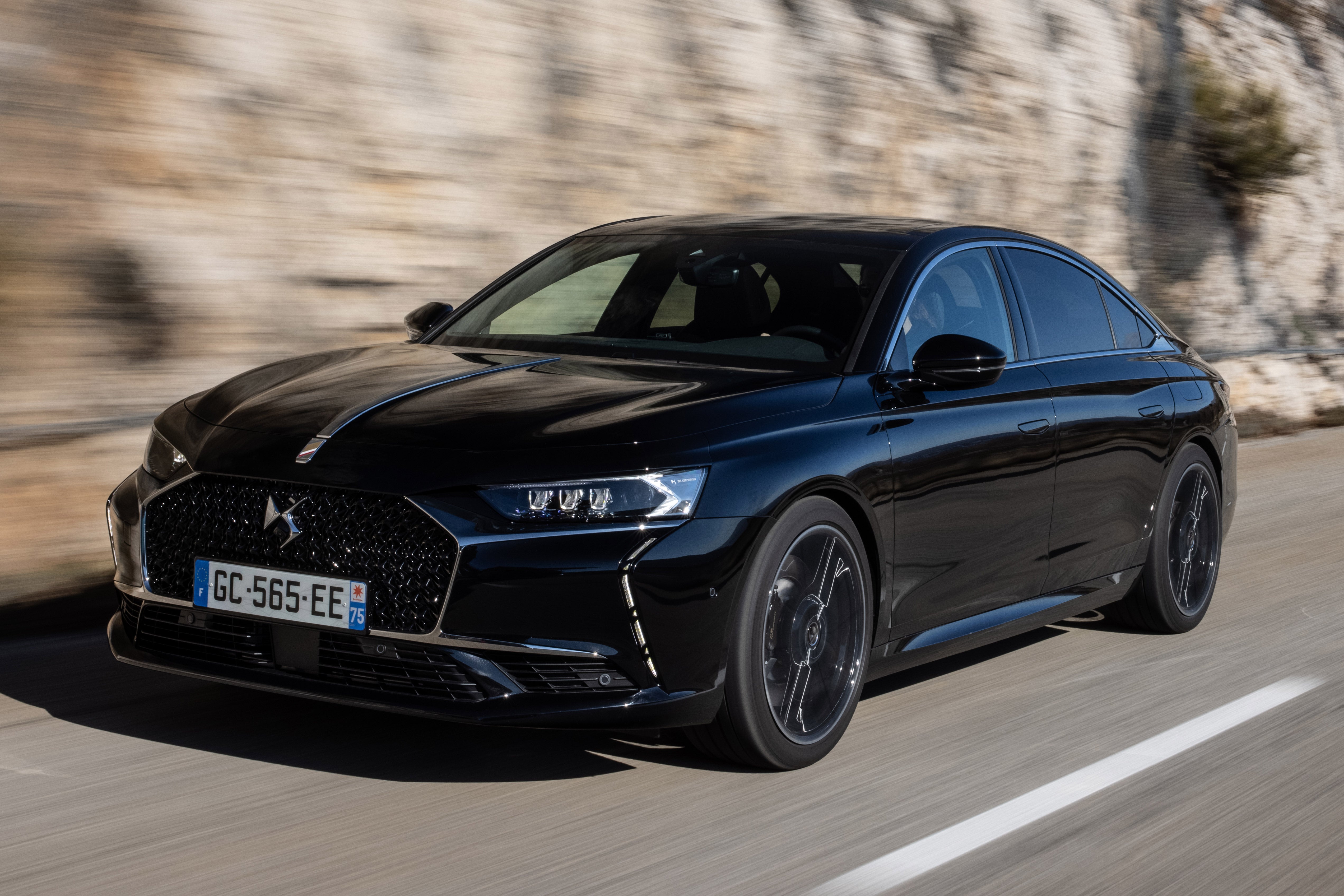DS 9 Review 2025: Price, specs & boot space
Written by Andy Brady
Quick overview
Pros
- Efficient plug-in hybrid engines
- Very refined on the motorway
- Depreciation means it'll be fairly affordable sooner rather than later
Cons
- Underwhelming to drive
- Interior isn't really posh enough for the price tag
- Isn't all that practical
Overall verdict on the DS 9
"The premium car market is a tough nut to crack. While buyers of mainstream cars and SUVs might be willing to consider a three-year finance deal on something a little unusual, buyers of expensive saloon cars tend to be a bit more traditional. We doubt many will be swayed by the DS 9's low running costs or quirky cabin – and we can't say we'd blame them."
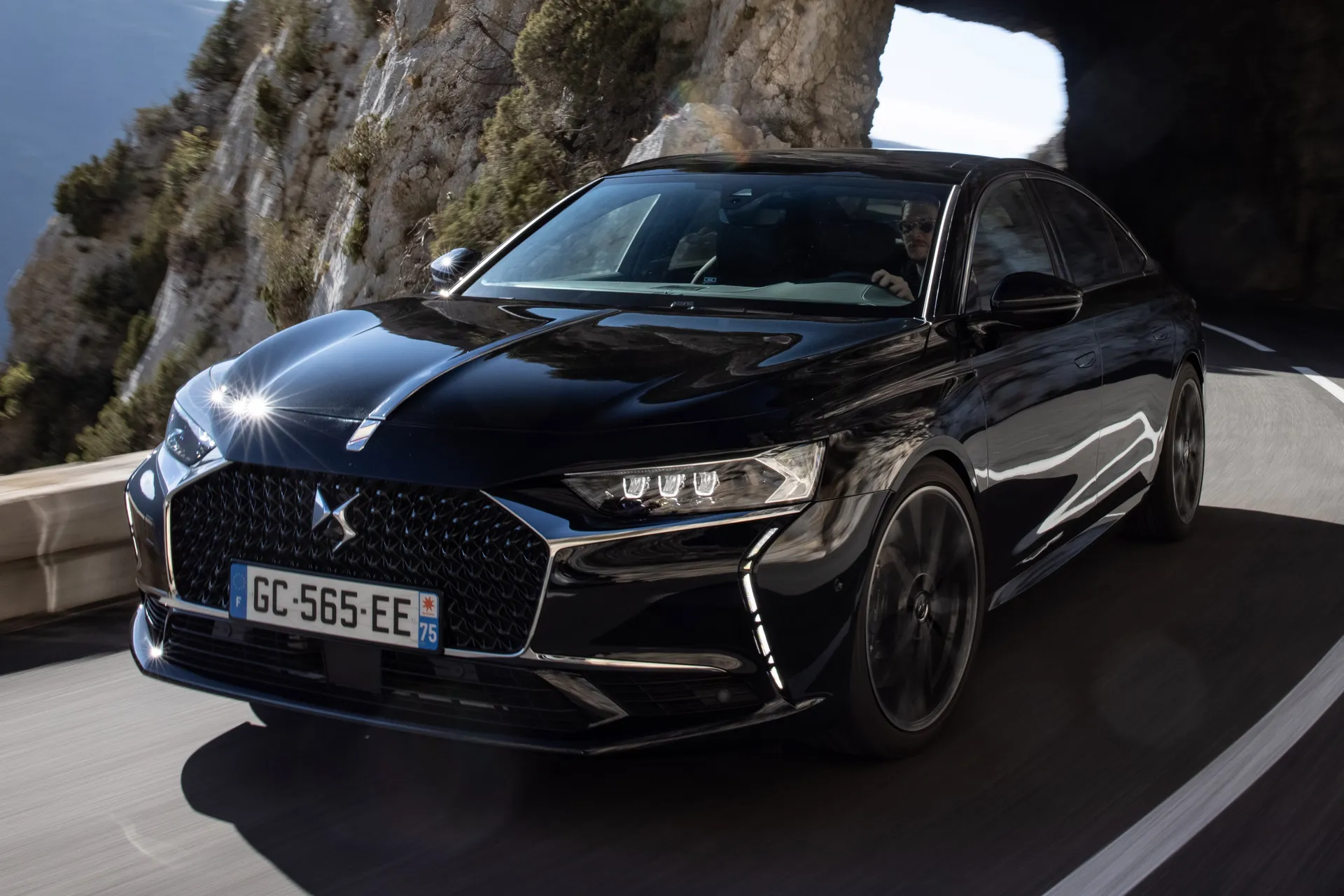
DS Automobiles has its roots in French carmaker Citroen but now forms part of the wider Stellantis group. That means the DS 9 is based on cars like the new Peugeot 508, only with a posher interior and a few gimmicky features intended to attract buyers away from premium saloon cars like the BMW 5 Series, Audi A6 and Mercedes E-Class.
Although you can buy the DS 9 with a standard 1.6-litre petrol engine (for now, at least), it's quite telling that the bulk of sales are expected to feature plug-in hybrid power. That's because their low CO2 emissions and generous zero-emission range mean company car buyers will save a hefty amount in tax. If you want to buy a used DS 9, you might have to wait a little while, but it won't be long before affordable ex-fleet cars hit the market.
The DS 9 was launched only a few months ago with a 225PS plug-in hybrid powertrain. This has been superseded very quickly by a new 250PS unit, badged the DS 9 E-Tense 250, while a new range-topping E-Tense 4x4 360 has also hit the market. Take a look at our guide to the best hybrid cars if you're in the market for a PHEV.
It's the latter that's most interesting, but isn't necessarily the one that we'd spend our own money on. Like all DS 9s, the E-Tense 4x4 360 is made in China. It actually leaves the production line as a standard front-wheel-drive 225 model, before being shipped to DS Performance's base in France where it's given a thorough overhaul to turn it into the range-topping 360. That includes fresh suspension and an extra motor on the rear axle.
Sounds expensive, right? Someone has to pay for that – and it's whoever foots the bill for a brand new DS 9 E-Tense 4x4 360. It costs £54,100 in Performance Line+ trim, while the range-topping DS 9 E-Tense 4x4 260 Rivoli+ is £57,200. That's about the same as a BMW 545e – the most powerful (and probably most desirable) plug-in hybrid BMW's ever sold.
Most buyers will be happy with the DS 9 e-Tense 250. It's not quick, but it is rather refined, capable of mooching around under electric power for 38 miles according to the WLTP combined cycle. Even though it's quite big, it's easy to drive around town, while there's a lengthy list of standard safety kit available.
We're yet to sample the DS 9 on UK roads, but our initial impressions suggest it's not as wafty and comfortable as you might expect (even with the brand's fancy road-scanning suspension). Refinement is impressive, though, with only the noise of the petrol engine intruding into the cabin once you're out of battery.
The interior is a bit of a mixed bag. Generally, it feels pretty classy, and there are some neat features that give it the upmarket edge. The infotainment lets it down a bit, though, with slow responses and pretty mediocre graphics.
It's also not particularly practical. Access to the boot is tight, and any underfloor storage you might usually expect is taken up by things like batteries. We'd like to see a DS 9 estate (you can buy a Peugeot 508 SW) but that'd probably be an even more niche derivative of an already slow-selling model. heycar has 1000s of used cars for sale, including a wide range of DS 9s for sale.
Is the DS 9 right for you?
What's the price you're willing to pay for individuality? Nearly £60,000 for a slightly odd Chinese-slash-French plug-in hybrid saloon is a tricky one to justify. There are more affordable models, but we'd recommend waiting a few years until the DS 9 has lost a considerable chunk of its value. It'll be a while before it's more appealing than a used BMW 5 Series or Mercedes E-Class, though.
What’s the best DS 9 model/engine to choose?
Few buyers will go for the entry-level DS 9 Puretech 225 petrol engine – in fact, we wouldn't be surprised to see it quietly dropped from the brochures. The plug-in hybrid models are more popular, with private buyers tempted by their zero-emission electric range and company car drivers attracted by their low tax rates. Unless you really want the performance of the DS 9 E-Tense 4x4 360, we'd stick to the more affordable DS 9 E-Tense 250.
What other cars are similar to the DS 9?
There's nothing quite like the DS 9, but it's priced up against established premium competitors like the BMW 5 Series, Audi A6 and Mercedes E-Class. That's, erm, bold. If you're looking for an unconventional choice, you may also wish to look at the Volvo S90 or perhaps the new Genesis G80.
Comfort and design: DS 9 interior
"With toggles on the centre console for opening the windows, an engine start button in the middle of the dash and a fancy clock that spins around, the DS 9's cabin certainly offers something a little different. It's not as convincingly posh as a Mercedes-Benz E-Class, though, and you have to pay top money for the most desirable interior finishes."
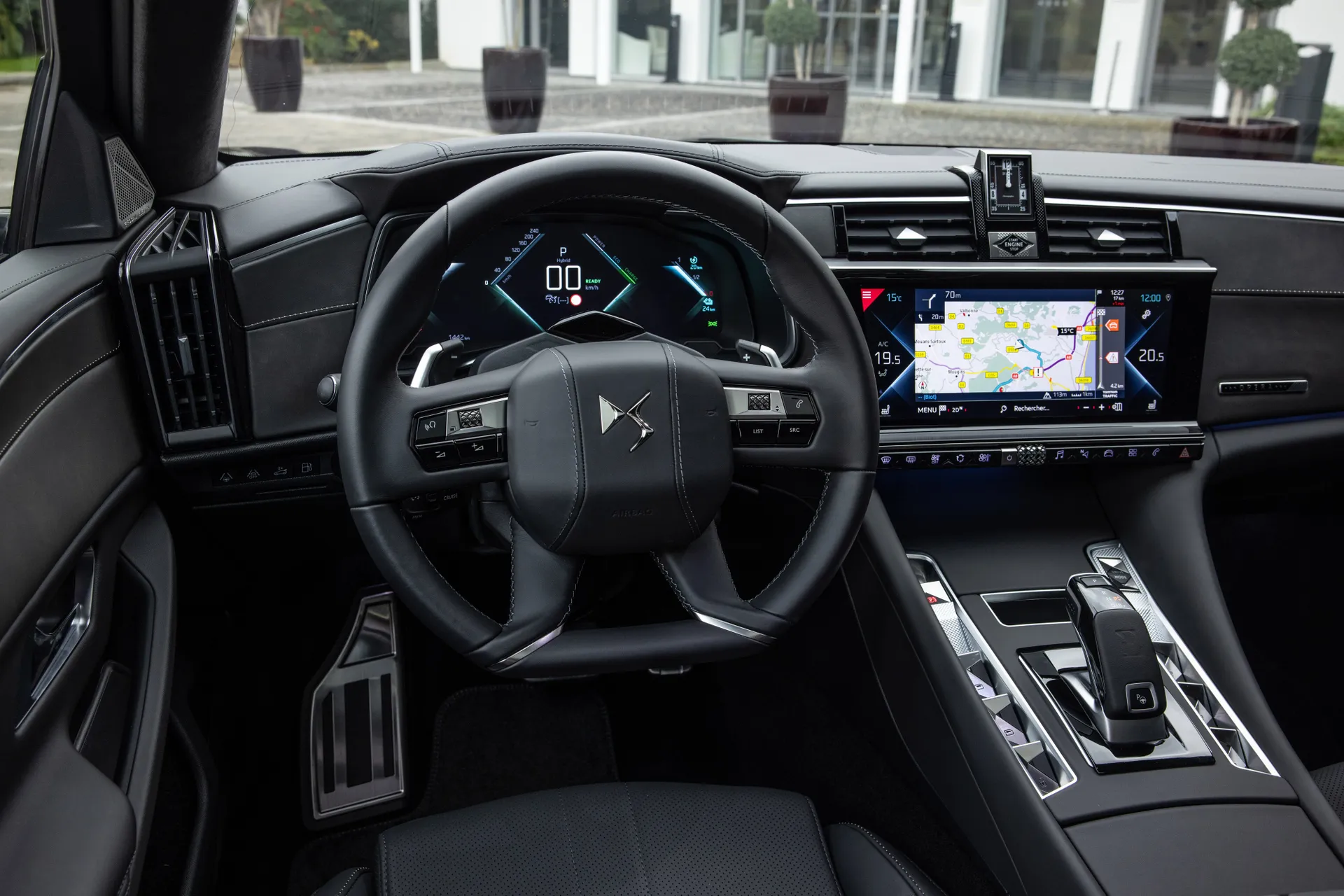
The DS 9's cabin is very spec-dependent. DS 9 Performance Line+ models come with black Alcantara trim, a perforated leather steering wheel and crystal inlays on the switches below the central screen. Full LED ambient interior lighting is also standard.
We'd look for a DS 9 Rivoli+ for its standard-fit leather trim along with with a seat cooling system and even massage seats in the front. The optional Lounge Pack adds these to the rear seats.
Unsurprisingly for a car like this, the DS 9 is very comfortable. We found the seats to be supportive, while there's loads of adjustment so you can have them cranked as high or low as you wish.
Quality and finish
In terms of interior quality, the DS 9's cabin feels a bit like a mainstream car that's been poshed up a bit (much like the Ford Mondeo Vignale.... and what a success that turned out to be). We're quite keen on the optional Opera interior, with its nappa watchstrap leather seats and pearl stitching, but that's quite an expensive option (£3000 at the time of writing).
It certainly doesn't feel downmarket but jump from a Mercedes-Benz E-Class or Audi A6 into this and you're going to feel a little shortchanged.
Infotainment: Touchscreen, USB, nav and stereo in the DS 9
The best thing we can say about the standard-fit 12-inch navigation system in the DS 9 is that Apple CarPlay and Android Auto are standard, so at least you can mirror apps from your phone rather than relying on the the car's own clunky infotainment system. It's just not as user-friendly as you'll find in rivals, while the graphics look decidedly mainstream. It's a long way off BMW iDrive.
There are some touch-sensitive shortcut buttons below the media display, although they're annoyingly slow to react and not intuitive to use on the move. Frustratingly, performing simple tasks like tweaking the temperature of the climate control brings up a display on the touchscreen - that gets a little irritating when your passenger decide they want their heated seats on just as you're navigating a complicated junction.
Wireless phone charging is standard on the DS 9 Rivoli+, while all models come with a 12.3-inch digital instrument cluster.
Space and practicality: DS 9 boot space
Measuring 4934mm long, 2079mm wide (including door mirrors) and 1460mm in height, the DS 9 is quite a substantial saloon car. That translates to a reasonable amount of interior space, but it's not quite as practical as you might think.
Let's start with the boot, which is quite shallow and has a high lip for lifting bulky things over. Plug-in hybrid models don't have any spare room underneath the floor (that's where the batteries and charging cables are), but at least the boot is relatively deep. You can drop the rear bench (it folds forward as one in models with the massaging rear seats), but it's not easily done and it doesn't provide a flat floor once dropped. You'd be much better looking at estate versions of competitors like the BMW 5 Series Touring if you need outright practicality.
Still, a lengthy wheelbase means there won't be too many complaints from passengers in the back. There's certainly loads of kneeroom, while this six-foot-ish tester wasn't struggling for headroom either. A third passenger in the middle seat might feel a little cramped, especially with a lump in the floor leaving little room for feet, so it's best to treat the DS 9 as a four-seater (and make the most of that big centre arm rest).
Those in the front should be equally content with the space on offer. Both seats get electrical adjustment allowing you to fiddle about until you've found a comfortable seating position, and there's enough space between the driver and front-seat passenger to prevent any awkward elbow bashing.
Handling and ride quality: What is the DS 9 like to drive?
"No matter which engine you choose, the DS 9 is at its best on high-speed motorway runs. It'll glide along gracefully with impressive refinement, isolating the driver and passengers from the outside world. If you're looking for a car to drive to your place in the south of France, suddenly the DS 9 starts to make sense."

It's a big car, though, and, once you're off the motorway and covering ground on rural roads, it doesn't hide its chunky dimensions (and bulky kerb weight) quite as well as German competitors. Combine the four-wheel-drive system of the E-Tense 360 with its bespoke chassis setup and it does feel a bit more 'pointy' than lesser DS 9 models, but all of them have very light, overly-assisted steering which doesn't inspire a great deal of confidence.
It's not like it rides particularly well, either. High-spec models come with the brand's clever Active Scan suspension, which uses cameras and sensors to monitor ahead and prepare each individual wheel for bumps in the road. It's cool tech, but the DS 9 still feels firmer than it necessarily needs to be - no doubt the 20-inch alloy wheels on our test car (standard on the E-Tense 4x4 360) didn't help.
On the plus side, it doesn't feel quite as massive as you might expect in town traffic. Visibility is fairly acceptable, while you get cameras and parking sensors as standard.
What engines and gearboxes are available in the DS 9?
When it first went on sale in 2021, the DS 9 was offered with two engines: the standard PureTech 225 petrol and the E-Tense 225 plug-in hybrid. Both used a 1.6-litre turbocharged petrol engine, paired with an eight-speed automatic gearbox and – in the E-Tense – an 83kW electric motor.
The DS 9 E-Tense 225 was replaced by the E-Tense 250 in 2022, while a range-topping E-Tense 4x4 360 also joined the line-up. This combines a 200PS petrol engine with an electric motor on each axle, providing relatively rapid performance and a 0-62mph time of 5.6 seconds.
Its slightly tardy gearbox means it doesn't feel quite as quick as these figures suggest, though, while the petrol-electric powertrain seems to get flustered when you stomp on the accelerator pedal. Sure, it's brisk enough, but 'brisk enough' isn't really what you're after if you've spent nearly-£60,000 on a supposedly high-performance oddity such as this.
Refinement and noise levels
Refinement is pretty impressive. The electric range of the plug-in hybrid models mean they can run for up to 38 miles (33 miles for the DS 9 E-Tense 4x4 360) at speeds of up to 84mph before the petrol engine kicks in. When it's fully charged, it's just as quiet and refined as a pure-electric vehicle.
Of course, good things can't last forever, and the petrol engine makes its presence known quite quickly when it rumbles into life. You'll have to be pretty heavy with the accelerator when joining motorways in the DS 9 E-Tense 250, which doesn't help refinement, but it soon settles down once you're settled into a cruise. Road and wind noise are exceptionally well hushed, helped no doubt by the 3.9mm laminated glass.
Safety equipment: How safe is the DS 9?
The DS 9 is yet to be crash-tested by Euro NCAP but questions will be asked if it's not awarded the full five stars for safety.
While DS offers some genuinely quite cleverly driver-assist features on the DS 9, it's a shame that you have to pay extra for them. The Advanced Safety Pack (up to £700 depending on model) comes with the brand's Drive Assist semi-autonomous driving feature as well as a Driver Attention Monitoring system that'll alert you if you need to take a break.
There's also the optional DS Night Vision (up to £1400) which uses infrared cameras to act a second pair of eyes when driving at night, displaying a useful image on the digital instrument cluster with any danger (such as animals or pedestrians) outlined in yellow.
All DS 9 models come with lane-keeping aids, as well as Intelligent Speed Adaptation and an extended Emergency Braking System.
MPG and fuel costs: What does a DS 9 cost to run?
"The E-Tense plug-in hybrid models are the economy stars of the DS 9 range. Both the DS 9 E-Tense 225 and 250 can cover up to 38 miles under electric power before the petrol engine kicks in, meaning they have an official WLTP fuel economy figure of 257mpg."
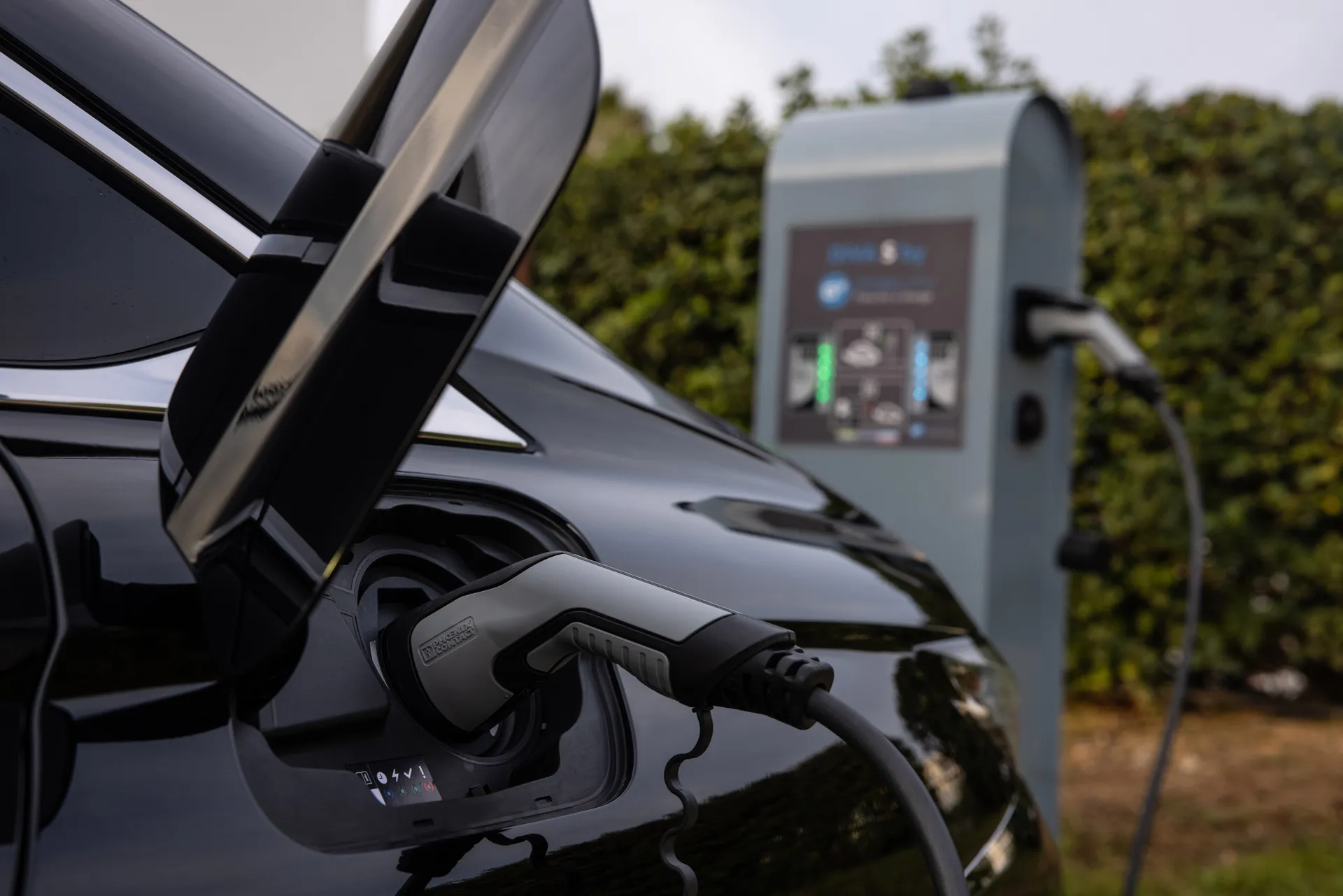
Like any plug-in hybrid, the DS 9 E-Tense 225 and 250 need regular charging if you're going to see fuel economy anywhere near this in the real world. A home 7kW wallbox will fully charge the battery in less than two hours.
With its 33-mile electric range, the DS 9 E-Tense 4x4 360 has a WLTP fuel economy figure of 157mpg. As it's quite a heavy, powerful saloon car, expect this to drop quite significantly once the battery's empty.
If you're not able to charge a car regularly, the DS 9 PureTech 225 should be relatively efficient with minimal effort. It'll officially return up to 40.9mpg.
How reliable is the DS 9?
While DS is a relatively new brand, the DS 9 shares proven technology with other Stellantis models like the Citroen C5 Aircross, Vauxhall Astra and Peugeot 508. That means it should be fairly dependable, while the brand prides itself on exceptional customer service levels from its dealerships.
Insurance groups and costs
The cheapest DS 9 to insure is the Puretech 225 petrol in either Performance Line+ or Rivoli+ trim. This sits in insurance group 35E, meaning your annual insurance premium might be slightly less than the equivalent BMW 5 Series or Mercedes E-Class.
Plug-in hybrid DS 9 E-Tense 225 and 250 models are likely to be a little more expensive to insure, placed in insurance groups 38E or 39E (depending on spec). As you'd expect for a car with 360PS, the DS 9 E-Tense 4x4 360 will cost you a considerable amount in insurance, particularly if you're a young or inexperienced driver. This is in insurance group 43E.
VED car tax: What is the annual road tax on a DS 9?
The DS 9 plug-in hybrid's eco credentials will save you money in the first year but, with list prices of more than £40,000, you'll be hit hard in road tax for the following five years. That's because of the £335/year premium car tax which applies to all vehicles with a list price of more than £40,000 (no matter how little you pay) and is on top of the regular £145/year VED fee for hybrid vehicles.
A petrol DS 9 will cost you £555 for the first year's VED (paid when the car's first registered as part of its on-the-road price). After that, you'll pay £155/year plus £335 for five years.
How much should you be paying for a used DS 9?
"You'll pay upwards of £40,000 for a new DS 9 while the plushest plug-in hybrids are nudging £60,000. That's a lot of money for a premium car with a relatively unknown badge – but there are already deals available on the nearly-new market."
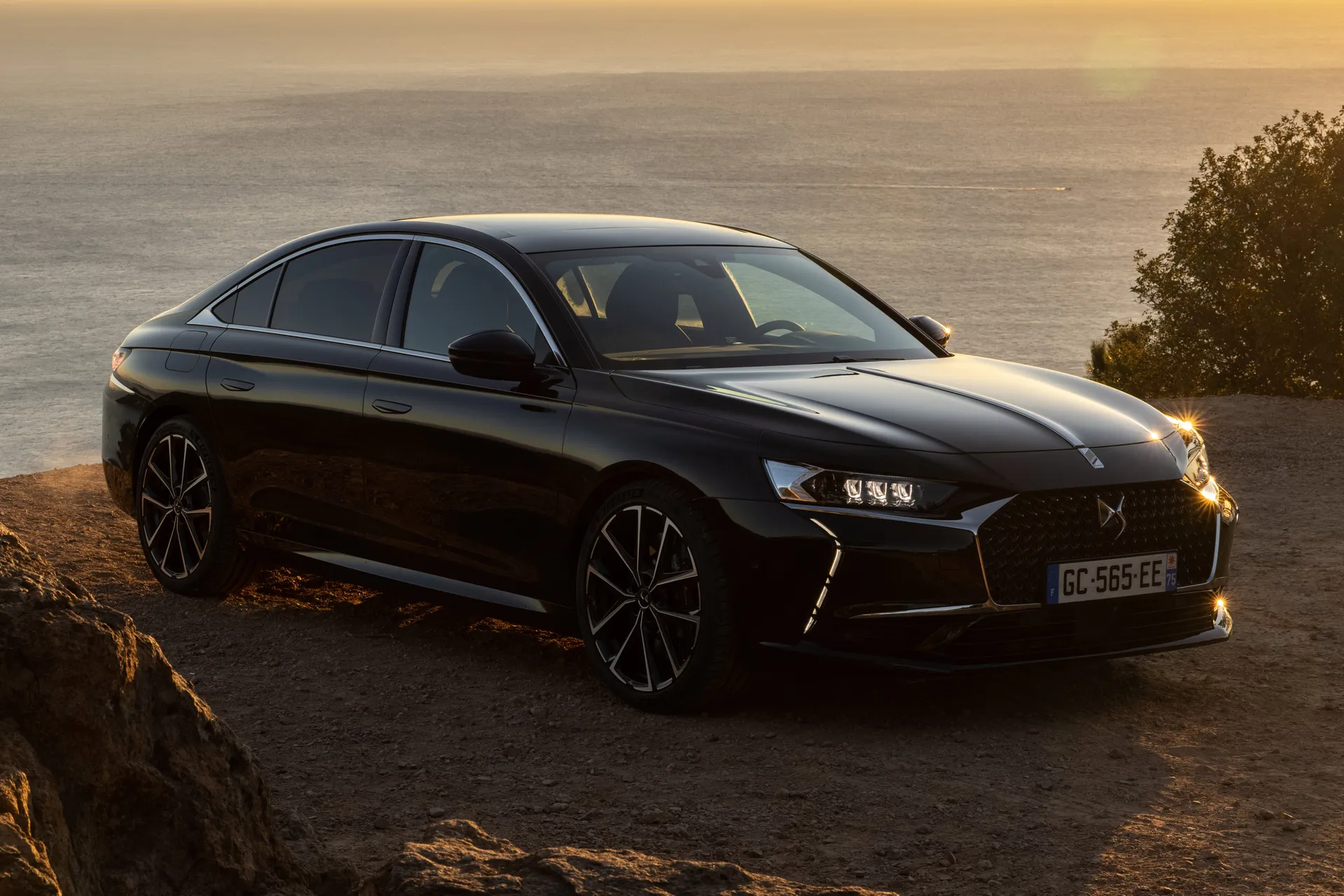
If you're not fussed about plug-in hybrid power, the DS 9 PureTech 225 starts from £40,615 when new, but dealers are currently offering up to £2000 off ex-demonstrator models. Give it a year or two and we reckon there'll be some even more significant savings available on used DS 9 cars.
In the meantime, you can pick up a new DS 9 E-Tense 250 Performance Line+ for £47,100, while the same plug-in hybrid engine in Rivoli+ trim starts from £50,200. The more powerful DS 9 E-Tense 4x4 360 Performance Line+ is priced from £54,100 while the top-spec DS 9 E-Tense 4x4 360 Rivoli+ is £57,200.
Trim levels and standard equipment
The DS 9 Performance Line+ is identified from the outside by its gloss black grille and 19-inch black alloy wheels. Inside, the DS 9 Performance Line+ comes with black Alcantara seats with Carmin and gold stitching. There’s a multifunction steering wheel trimmed in leather, also with Carmin and gold stitching, while LED ambient interior lighting is also standard. The DS 9 Performance Line + comes with a 12.3-inch digital instrument cluster along with a 12.0-inch navigation system with Apple CarPlay and Android Auto. Wireless phone charging is also standard on the DS 9 Performance Line+.
The DS 9 Rivoli+ takes a slightly posher approach with a choice of three interior styles: a Basalt black leather interior, or an Opera trim interior with two colours of Nappa watchstrap leather (Rubis red or black). The Rivoli+ also features Polyambient interior lighting as well as the brand's air-filtering air quality system, while ventilating and massaging front seats are also standard.
Ask the heycar experts: common questions
What is a DS 9?
How much does a DS 9 cost?
What does DS stand for?
Get our latest advice, news and offers
Keep me updated by email with the latest advice, news and offers from heycar.
By submitting you agree to our privacy policy
